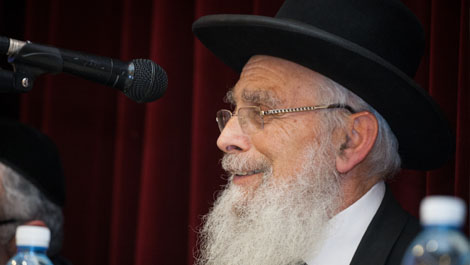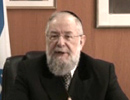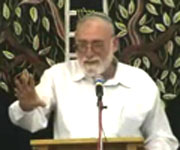Beit Midrash
- Sections
- Chemdat Yamim
- Igrot Hare’aya
Recipient: Rav Eliyahu David Rabiniowitz Teomim (Aderet) – Rav Kook’s father-in-law
Body: I have received a letter from the av beit din of Zaumel (Rav Kook’s former community) on the following matter.

Igrot Hare’aya (200)
Beit Din Eretz Hemda - Gazit
7 - A Small but Crucial Amount of Mussar Study
8 - Dealing with Questionable Aron Kodesh
9 - Dealing with Unauthorized Marriage
Load More
Certainly, what I said was, thank G-d, accepted, especially since the minds of the masses are attracted to mitzvot that are connected to beauty. (In our generation, this is just as well, because it at least keeps people connected to service of Hashem and gives them warm feelings toward mitzvot that are otherwise forgotten from our hearts, in our great sins. Although they turn the secondary into the primary, any action whose content is to honor Hashem is dear to me, unless it pushes off an obligatory mitzva, like in the case you were involved in.)
Many were inspired and donated with excitement. They hired a craftsman to make an aron kodesh with more aesthetically involved artistic elements than I had intended. However, I was reluctant to stop them because money saved by stopping the extras would not have been used for a different mitzva project. I was also concerned that if the beauty would be restrained, interest would also wane, and Heaven forbid the small aron kodesh and the likelihood of another disaster would remain.
This approach was more important to me than having a fast (over the falling of the sefer Torah). I was therefore very lenient about the fast, even though I did not eliminate it totally because I believed that involvement in fixing a bad situation is good repentance. It is similar to the Terumat Hadeshen’s position on the repentance of serious sinners – their distancing themselves from improper desires is a clear indication of repentance.
Recently, this aron kodesh was completed, with all of its art work, but it has not yet been installed in the shul because they want to do so with great fanfare and also invite me because I was the initiator and encourager of this mitzva. However the av beit din, may he live, told me that the art work of the "wings" for the aron kodesh includes protruding animal forms, especially lions. It is known that some of the greatest rabbis have vociferously opposed this in shuls, especially when it is opposite where people bow, and he asked me to write to the people to refrain from installing these wings.
This is a very difficult situation, depressing for those involved, as it was a large expense. Had I known in advance, I would have, despite my lowliness, used all my strength to oppose it, in deference to the great men who forbid it. However, since it was already done and the whole public has seen it permitted in several shuls in holy communities, led by the greatest brilliant and pious scholars, I believe that they have what to rely upon regarding the letter of the law. After all, many great Rishonim posited that there is no prohibition, and those who forbade it view it only as a Rabbinic violation (no more than a small minority view it as a Torah-level prohibition).
In my humble opinion, to the contrary, we should be concerned with casting aspersions on the "earlier people" (who have such art work in their shuls). In my humble opinion, since those who forbid do so because it arouses suspicion of idol worship, Heaven forbid, and since we see some righteous rabbis who did not oppose the phenomenon, if we protest, that would cast great aspersions, Heaven forbid. It seems to me that rabbis made a big deal about this only in places without a custom, but now that the matter has become widespread and customary, there is no longer suspicion. Nevertheless, I am certainly afraid to do more than "look away."

Refuting Criticism by the Ridbaz – #311 – part III
Date and Place: 19 Sivan 5670 (1910), Yafo
Beit Din Eretz Hemda - Gazit | Nisan 5785

Description of New Yeshiva’s Goals to a Supporter – #328
Date and Place: 12 Elul 5670 (1910), Yafo
Beit Din Eretz Hemda - Gazit | Sivan 5785

Keeping Shemitta Partially – #272
Igrot Hare’aya – Letters of Rav Kook; Date and Place: 2 Adar I 5670 (1910), Yafo
Beit Din Eretz Hemda - Gazit | Tishrei 5785

Concern for Communal Kashrut Standards – #288, 290
Date and Place: 4 Nisan 5670 (1910), Yafo
Beit Din Eretz Hemda - Gazit | Tevet 5785

Beit Din Eretz Hemda - Gazit

Payments after a Gradual End of Employment
(Based on ruling 82024 of the Eretz Hemdah-Gazit Rabbinical Courts
Nissan 5783

Trying to Arrange Purchase of Land in Eretz Yisrael – part II
#229 Date and Place: 13 Tishrei 5670 (1909), Yafo
19 Sivan 5784

Halachic Shmita Guide from Eretz Hemdah
Elul 8 5781






















